Bancroft Library
Harvey L. Sharrer (1940 – 2024)
It is with deep sadness that we share the news that Harvey Sharrer, our dear friend and colleague and co-director of the Bibliografia de Textos Antigos Galegos e Portugueses (BITAGAP) for more than thirty-five years, died unexpectedly last month.
Harvey, Professor Emeritus at the University of California Santa Barbara, passed away at his home in Santa Barbara on September 12, 2024. His life was dedicated to teaching, academic research, and world exploration.
Born in Oakland, California in 1940 to Ruth Morehouse and Harvey Sharrer, he spent his formative years in Oakland and Danville, California, graduating from San Ramon Valley High School in 1958. His passion for foreign languages was ignited by his high school Spanish teacher, who inspired him to pursue language studies in college. After graduating from high school, Harvey took a summer course at the Monterey Institute of Foreign Studies and spent Fall quarter at the University of San Francisco. He then took a gap year to work with his father’s remodeling business, saving money for a transformative month’s-long European trip with a high school friend—an experience that kindled his lifelong love for world travel.
Returning to the U.S., Harvey earned his bachelor’s and master’s degrees in Spanish from UC Berkeley in 1963 and 1965, respectively, followed by a doctorate in Hispanic and Luso-Brazilian Literature from UCLA in 1970, with a dissertation on “The Legendary History of Britain from its Founding by Brutus to the Death of King Arthur in Lope García de Salazar’s Libro de las bienandanzas e fortunas.” Even before finishing his dissertation he had published a Critical Bibliography of Hispanic Arthurian Material, I: Texts: The Prose Romance Cycles (London: Grant & Cutler, 1977) in Alan Deyermond’s fundamental series of Research Bibliographies & Checklists. He spent his entire academic career at UC Santa Barbara, starting in 1968 as an Acting Assistant Professor and progressing steadily through the canonical ranks to full professor in 1981. He served as chair of the UCSB Department of Spanish & Portuguese in 1978-1981 and then again 2002-2003.
Dr. Sharrer was universally admired for his scholarship and the impressive breadth of his knowledge of medieval literature and culture, encompassing Arthurian literature, the medieval Romance lyric, and, increasingly, the digital humanities—a field in which he was a pioneer. He made significant scholarly contributions to our knowledge of medieval and early modern Portuguese, Galician, Spanish, and Catalan literatures. His expertise in Catalan was honed by the two years (1984-1986) he spent as the director of the Barcelona Study Center (U. of California and U. of Illinois), where he enjoyed the friendship of Vicenç Beltran and Gemma Avenoza, who would become colleagues in PhiloBiblon as the directors of the Bibliografia de Textos Antics Catalans (BITECA).
He collaborated on BITAGAP with his friends Arthur Askins and Martha Schaffer from its beginning in 1989 as one of PhiloBiblon‘s three constituent bibliographies, all three dedicated to uncovering and documenting the primary sources of the medieval Romance literatures of the Iberian Peninsula:
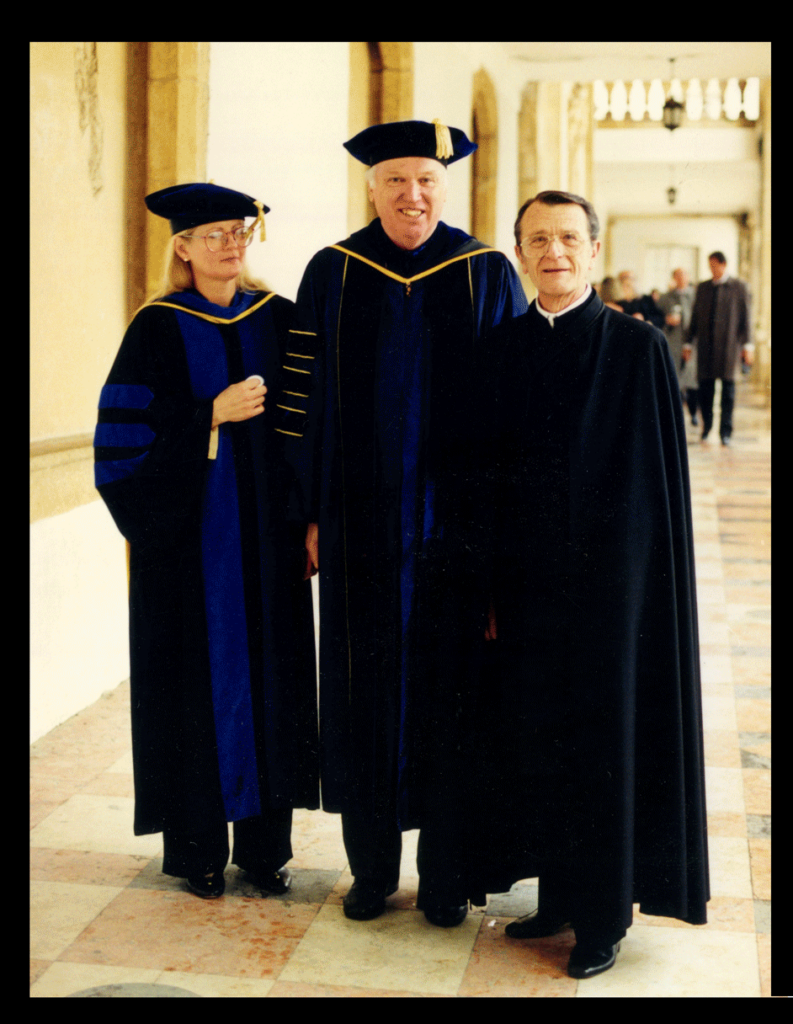
The three colleagues were indefatigable ratones de bibliotecas, systematically quartering Portugal, from Bragança in the north to Lagos in the south, in search of new manuscripts of medieval Portuguese and Galician texts. They found the richest collections, however, in Lisbon: the Biblioteca Nacional de Portugal, the Ajuda library, and Arquivo Nacional da Torre do Tombo. They and their Portuguese collaborators, especially Pedro Pinto and Filipe Alves Moreira, combed through those collections assiduously. Harvey’s most spectacular discovery, in 1990, was the eponymous Pergaminho Sharrer, a parchment fragment with seven lyric poems in Galician-Portuguese, with music, by King Dinis of Portugal (1278-1325) . It had been used as the cover of a bundle of 16th-c. documents in the Torre do Tombo, a not uncommon practice during the period.
Harvey described his discovery in “Fragmentos de Sete Cantigas d’Amor de D. Dinis, musicadas –uma descoberta” (Actas do IV Congresso da Associação Hispânica de Literatura Medieval, Lisboa: Edições Cosmos, 1991: I:13-29).
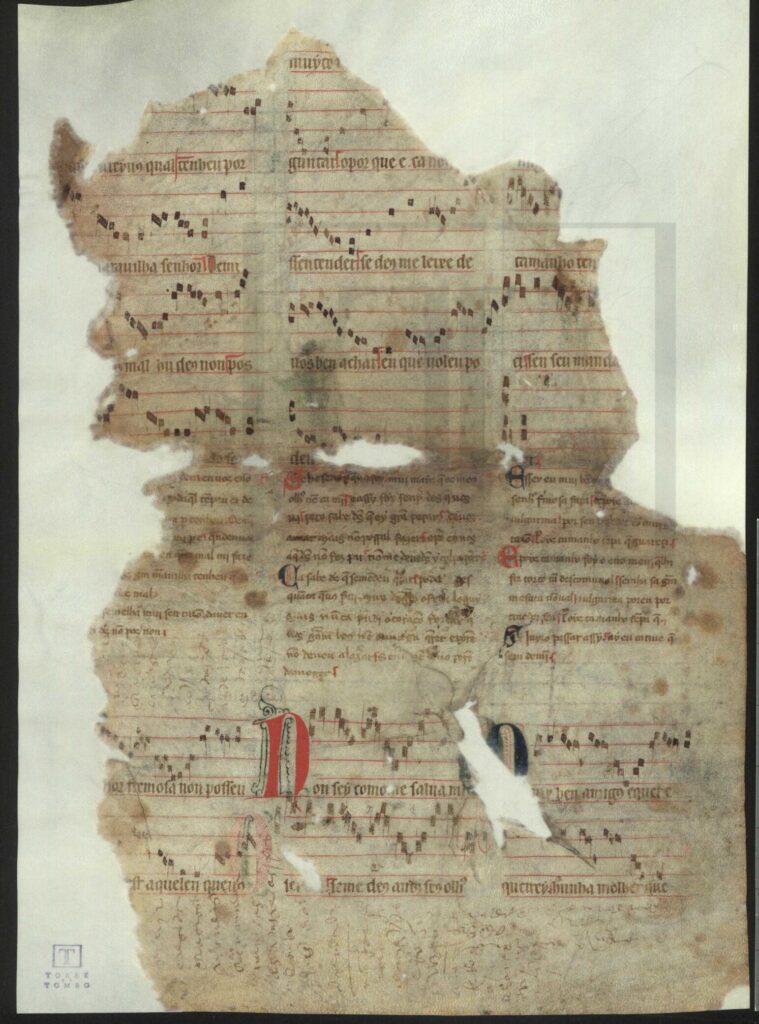
Retirement came in 2011, but it did little to slow Harvey down. He continued to participate in conferences worldwide and, at UCSB, generously proofread articles for his former department. He remained a respected and admired scholar, mentor, and colleague throughout his life.

Harvey’s career was commemorated by a splendid volume of homage studies edited by Ricardo Pichel, “Tenh’eu que mi fez el i mui gran ben”. Estudos sobre cultura escrita medieval dedicados a Harvey L. Sharrer (Madrid: Silex, 2022):
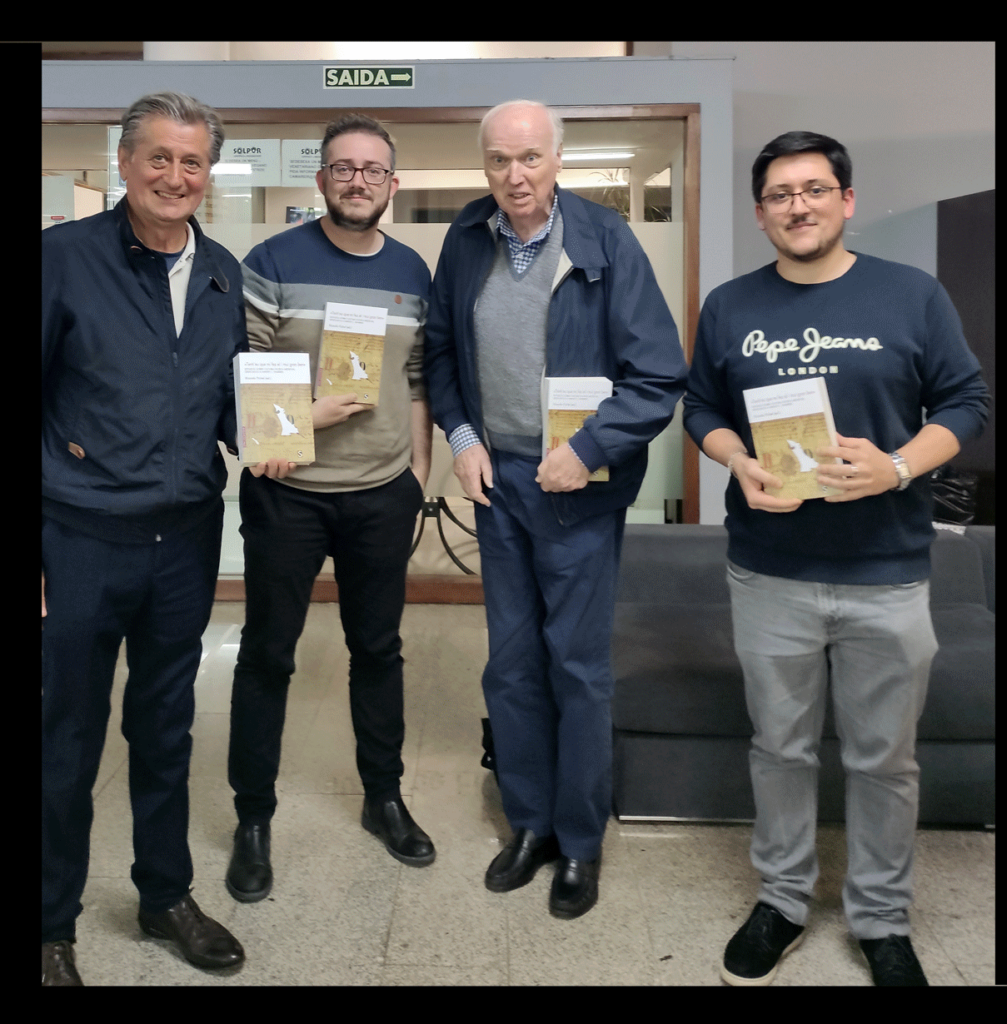
Harvey Sharrer will be deeply missed for his extraordinary scholarship, his remarkable mentorship of and generosity toward students and young scholars, and his courteous and congenial personality, um cavaleiro da escola antiga. His work will continue to influence future generations of students and scholars. In recognition of his scholarly career and lasting impact on the Santa Barbara campus, the campus flag was lowered to half-staff on Wednesday, October 2.
Harvey, who never married and considered his scholarly career to be his life’s work, is survived by a sister, Elizabeth Porter, in Upland, California, a brother, William Sharrer, in Louisville, Kentucky, and several cousins, nieces, and nephews who will miss him dearly.
Harvey did not wish to have a formal memorial service, but rather planned to create an endowment in his name at UC Santa Barbara, to be called the “Harvey L. Sharrer Dissertation Travel Grants.” Plans for this endowment are going forward actively, and we will announce them opportunely. It will support future scholars in their research endeavors, particularly in the field of Ibero-Romance languages, reflecting Harvey’s lifelong passion and areas of expertise.
William L. Sharrer
Elide V. Oliver
Charles B. Faulhaber
Richard Wyatt, Jr.: A Blessed Life of Art and Music
In February 2023, Dr. Bridget Cooks and I had the pleasure of interviewing the Los Angeles-based visual artist and songwriter Richard Wyatt, Jr., for the Getty Research Institute’s African American Art History Initiative. Wyatt was a joy to interview, making us laugh constantly and sharing what he called Forrest Gump moments, where he was in the right place at the right time to meet and collaborate with celebrities of all stripes.
A little over a year after this delightful interview, Bridget and I were saddened to hear that Richard had passed away in May 2024. The world has lost a kind and funny man, as well as an talented artist, musician, educator, and thinker.
While I continue to mourn Richard’s passing, I also want to celebrate his life by highlighting the wonderful stories he shared in his oral history about life, art, music, and seeking new challenges.
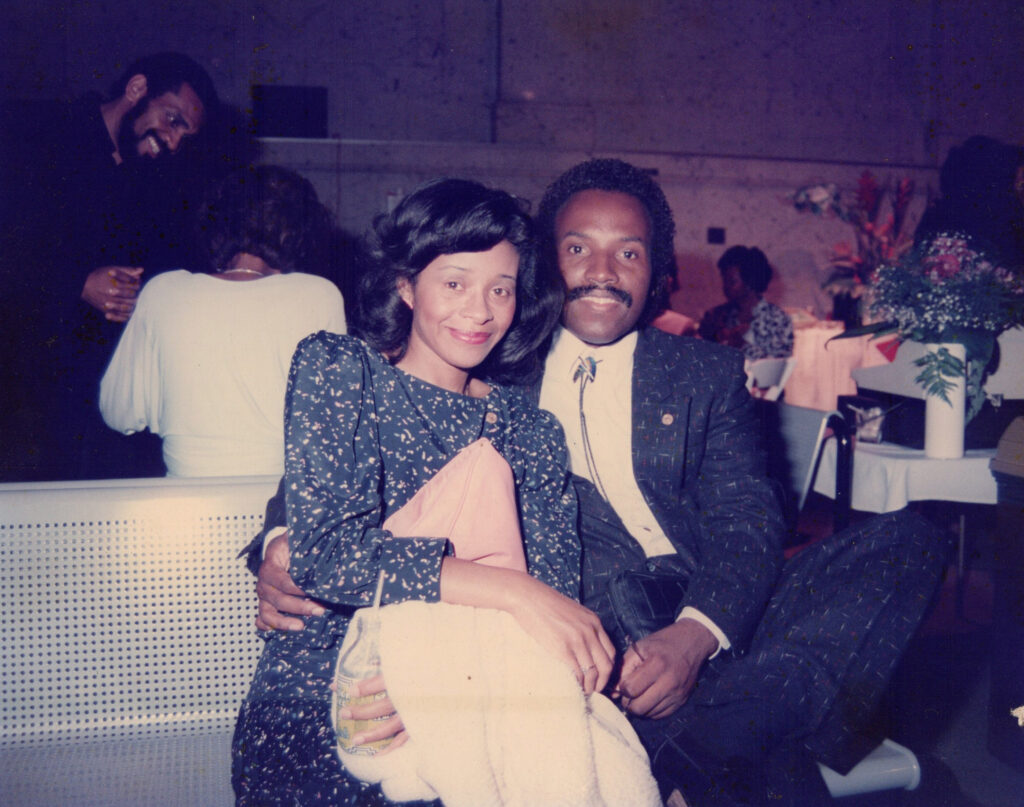
Richard Wyatt, Jr., was an artist whose work includes drawings, paintings, installations, and public art. Wyatt was born in Lynwood, California, in 1955, and lived in the Los Angeles area his whole life. He began his art career early, winning the Watts Chalk-In at twelve years old, and then studying at the Watts Towers Art Center, the Chouinard Art Institute, and the Tutor/Art Program with artist Charles White. Wyatt attended the University of California, Los Angeles, where he earned a BFA in art. Some of his best-known work in Los Angeles includes the mural Hollywood Jazz: 1945-1972 on the Capitol Records Building; the mural City of Dreams, River of History in Union Station; and the installation Ripple of Hope at Robert F. Kennedy Inspiration Park. Wyatt taught drawing and painting at the University of California, Irvine; the Otis Art Institute; and the Watts Towers Art Center. He also had a career as a songwriter, writing songs for musicians like The Miracles, The Sylvers, and New Edition.
One thing that continues to strike me about Richard is the indelible mark he has left on the world—and I mean that literally. Some of Richard’s best-known work was his public art, which adorned buildings and other public places in the Los Angeles area and beyond. For this reason, Bridget found interviewing Richard almost surreal. In the oral history, she explained, “…your work is part of my Los Angeles,” for indeed, Richard’s public art shaped the city in which she grew up. After our first day of interviews, Cooks and I drove around Downtown Los Angeles, pointing out and visiting sites where Richard’s work dotted the landscape: Union Station, Robert F. Kennedy Inspiration Park, the Capitol Records Building, and on and on.
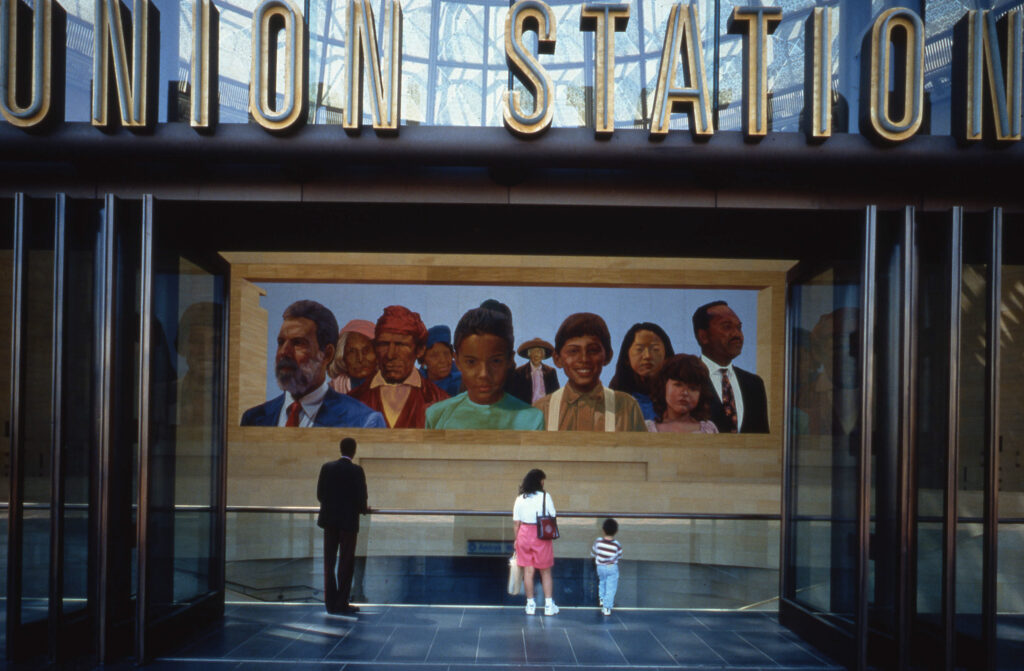
One of Richard’s most famous murals, Hollywood Jazz: 1945-1972, remains on the Capitol Records Building, although he later replaced the paint on this south-facing exterior wall with ceramic tile to combat the ravages of the sun. When Richard accepted the commission for this work, it was the perfect blend of his love of visual art and his passion for music. In this mural, he memorialized jazz greats, such as Billie Holiday, Ella Fitzgerald, Miles Davis, and Nat King Cole. And in one of those Forrest Gump moments, Richard met musician Bonnie Raitt on site at the Capitol Records Building during his original installation. Listen as Richard recounted this moment:
Richard also mused about the role of an artist after unveiling a work of public art, sharing his thoughts on the impact of his public work: “…you can’t control it…Once it’s out there, it’s out there. People are going to interpret it and take pictures.” And while we spoke about the joys of creating art for wide public consumption, Richard also acknowledged some of the challenges inherent in this work. Listen as Richard shared about some of his public art work with collaborator and fellow artist May Sun:
Richard’s talent also extended to music, and resulted in a prolific career as a songwriter for musical artists such as The Miracles, The Sylvers, Peaches & Herb, Tavares, Johnny Gill, and New Edition. Richard wrote his first song, “Keep on Keepin’ On (Doin’ What You Do)” for The Miracles when he was just eighteen years old. But for Richard, visual art and music were always intertwined, as he experienced synesthesia, a sensory condition in which, among other things, allows some people see colors when they hear music. Richard explained his synesthesia this way:
“I didn’t even know that term until somebody else told me…When I’m writing, that’s one thing. But once I start arranging it and getting the bass and guitar, and then you get strings and horns, there are certain sounds that have a color associated with them. I can’t explain it, but…I see colors once I hear a certain sound, you know? And when I’m creating the arrangements, or even mixing or whatever, and I’m going for a certain effect, it’s like once you get mixing, to me it’s like glazing in oil. That’s the easiest way I can explain it.”
Richard was a child prodigy who burst into the art world when he was twelve years old, rubbing elbows with more experienced art world talents like Charles White, John Riddle, George Evans, and Bill Pajaud. Yet, Richard carved out a career all his own. And while he left us too soon, Richard’s art lives on. To celebrate this remarkable man and artist, I suggest spending time in Downtown Los Angeles and experiencing the work of Richard Wyatt, Jr., for yourself.
To learn more about Richard Wyatt, Jr.’s, extraordinary life and work, explore his oral history!
About the Oral History Center
The Oral History Center of The Bancroft Library preserves voices of people from all walks of life, with varying political perspectives, national origins, and ethnic backgrounds. We are committed to open access and our oral histories and interpretive materials are available online at no cost to scholars and the public. You can find our oral histories from the search feature on our home page. Search by name, keyword, and several other criteria. Sign up for our monthly newsletter featuring think pieces, new releases, podcasts, Q&As, and everything oral history. Access the most recent articles from our home page or go straight to our blog home.
Berkeley SLATE-d for Back to School: Student Community in the Sixties
By Natalie Naylor
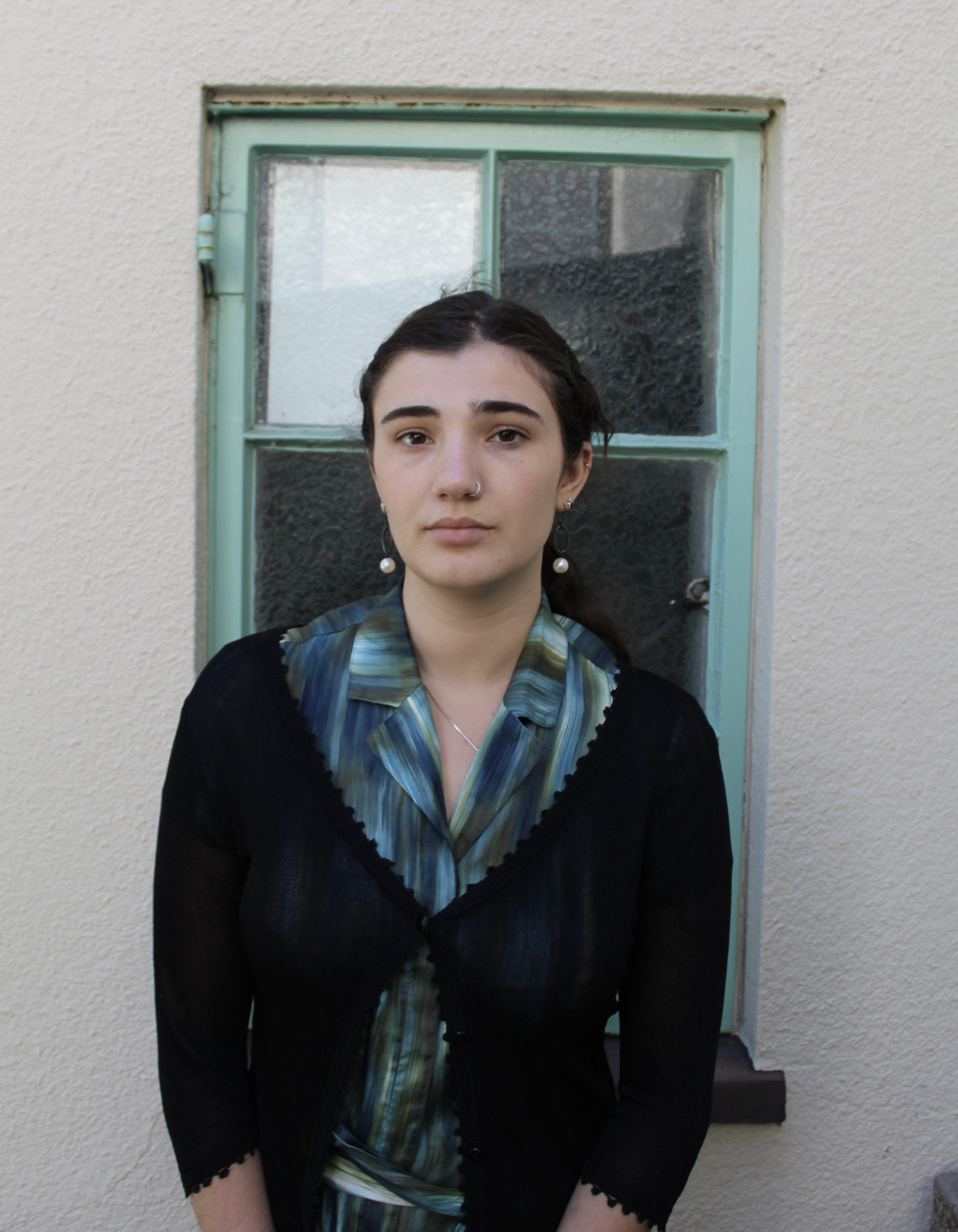
Natalie Naylor is a fourth-year undergraduate studying English and Creative Writing. She’s lived in the on-campus dorms, specifically Unit 2, and two Berkeley Student Cooperative properties during her time at UC Berkeley.
Well, it was magnificent! First of all, it was beautiful. I mean, Berkeley in the sixties was just a great place to be. It was very exciting; there were all kinds of new ideas. I loved my classes; I quickly made very good friends.
– Julianne Morris, SLATE Project
Berkeley in the 1960s is a time our campus and its surrounding community look back on with pride. During these years, UC Berkeley students, faculty, and community members participated in civil rights protests, antiwar activism, and, of course, the Free Speech Movement; these efforts are no doubt some of the most significant moments in Berkeley’s history. From the Mario Savio Free Speech Movement Café to the Martin Luther King Jr. Building and Free Speech Monument in Upper Sproul Plaza, the built environment referencing social activism in the sixties incorporates physical tributes to this time throughout UC Berkeley’s contemporary campus.
Sixty years later, as the Fall 2024 semester begins, it’s easy to feel as though that time in our history is completely removed from the present. However, students in the 1960s were concerned with issues familiar to UC Berkeley’s current student body: housing, humanitarianism, belonging, freedom of speech, and community building. This includes many of the members involved in the campus political group SLATE in the late 1950s and early 1960s. The Oral History Center’s SLATE Oral History Project documents the experiences and budding political consciousnesses of some of the students involved in on-campus activism at UC Berkeley sixty years ago.
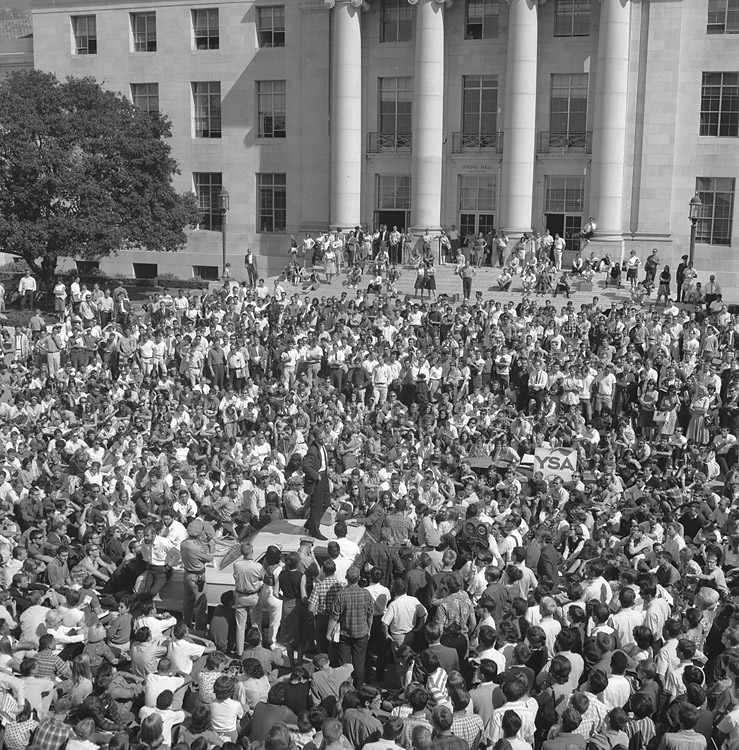
SLATE was a political party on UC Berkeley’s campus from 1958 to 1966 and, therefore, predated the Free Speech Movement. Its main goal: to present candidates for the Associated Students of the University of California (ASUC) office who supported racial equality and free speech on campus.
Jackie Goldberg, an undergraduate social science major in the mid-sixties, was one of the most well-known student activists involved in SLATE at UC Berkeley. She initially joined SLATE because of her passion for civil rights, as well as the strong community and support from other student activists on campus at the time. Her oral history is a part of the Oral History Center’s Free Speech Movement Oral History Project but chronicles the work she did with SLATE in detail.
When she arrived on campus, Goldberg underwent a year of dorm living—still a staple of the UC Berkeley freshman experience. After that first year in the dorms, she encountered a lack of housing on and around campus, which is a lasting issue at Cal. To secure housing for her second year, she participated in the sorority rush process and became a member of Delta Phi Epsilon. Goldberg claims that due to her Jewish background, most other houses declined to offer her membership. Experiencing this prejudice firsthand likely later influenced her activism in fighting discrimination in Greek life. In her oral history, she describes her housing journey as such:
I had applied to the co-op. I had applied to the dorms, and I didn’t get any of them. I was on the wait list for both. So my game plan was I would go in for a semester, try to grow up so I could get an apartment, find someone to get an apartment with…but it turned out that I was in this free-wheeling place, with a lot of nice people, some of whom are still my friends…and it was so easy. I didn’t have to cook, I didn’t have to clean, I didn’t have to shop, and it was cheap because I was doing the house bills.
Despite originally joining the sorority for housing reasons, Goldberg grew an affinity for the culture of her house and its lifestyle. In her oral history, she recalls: “I stayed all three years. I had no desire to leave.”
Goldberg thrived in community with other members of Delta Phi Epsilon and SLATE during her time at UC Berkeley. Her activist work and living situation occasionally overlapped, like while advocating for the racial integration of sororities at Cal. At the time, Greek life had a vast political presence on campus; Goldberg both embraced and challenged this precedent to incite political change at UC Berkeley. She succeeded in encouraging other sororities to desegregate, despite the decision sometimes diverging from their national organizations and sister-chapters.
Julianne Morris, another member of SLATE, had a less positive experience in an all-women’s housing arrangement around the University of California, Berkeley’s campus. While studying at UCLA, Morris founded the organization PLATFORM, inspired by conversations she’d had with members of SLATE. After craving more involvement in student politics, she transferred to UC Berkeley in the early 1960s and selected housing based on connections she’d previously made through SLATE. Morris recalls:
My first semester I was in a co-op, Stebbins Hall, and so I met a lot of women friends there. And of course, you know, it was very different then. There was a curfew, where you had to be in—and God forbid that there were any men there at night.
Even in the sixties, the University maintained in loco parentis authority over its female students from which it exempted male students. These unequal restrictions were especially apparent when it came to women’s housing accommodations. Because of this, although she found community both in SLATE and at Stebbins, Morris eventually sought more autonomy by moving to her own apartment after one semester in the co-op system. She explains:
Oh, I liked the idea of being freer. And you know, I hated having to come in at a certain time and no men in the house and the whole way things were at that time. And so I was very happy not to be in a dorm or a co-op anymore and be on my own.
Despite graduating sixty years ago, many of the buildings around UC Berkeley’s campus are part of a continuous built environment that would be physically recognizable to Morris and her peers.
In 2024, there are still two Berkeley co-ops designated for female-identifying students only, but no all-male-identifying cooperatives remain. One historically men-only house was Barrington Hall, which closed in 1989.
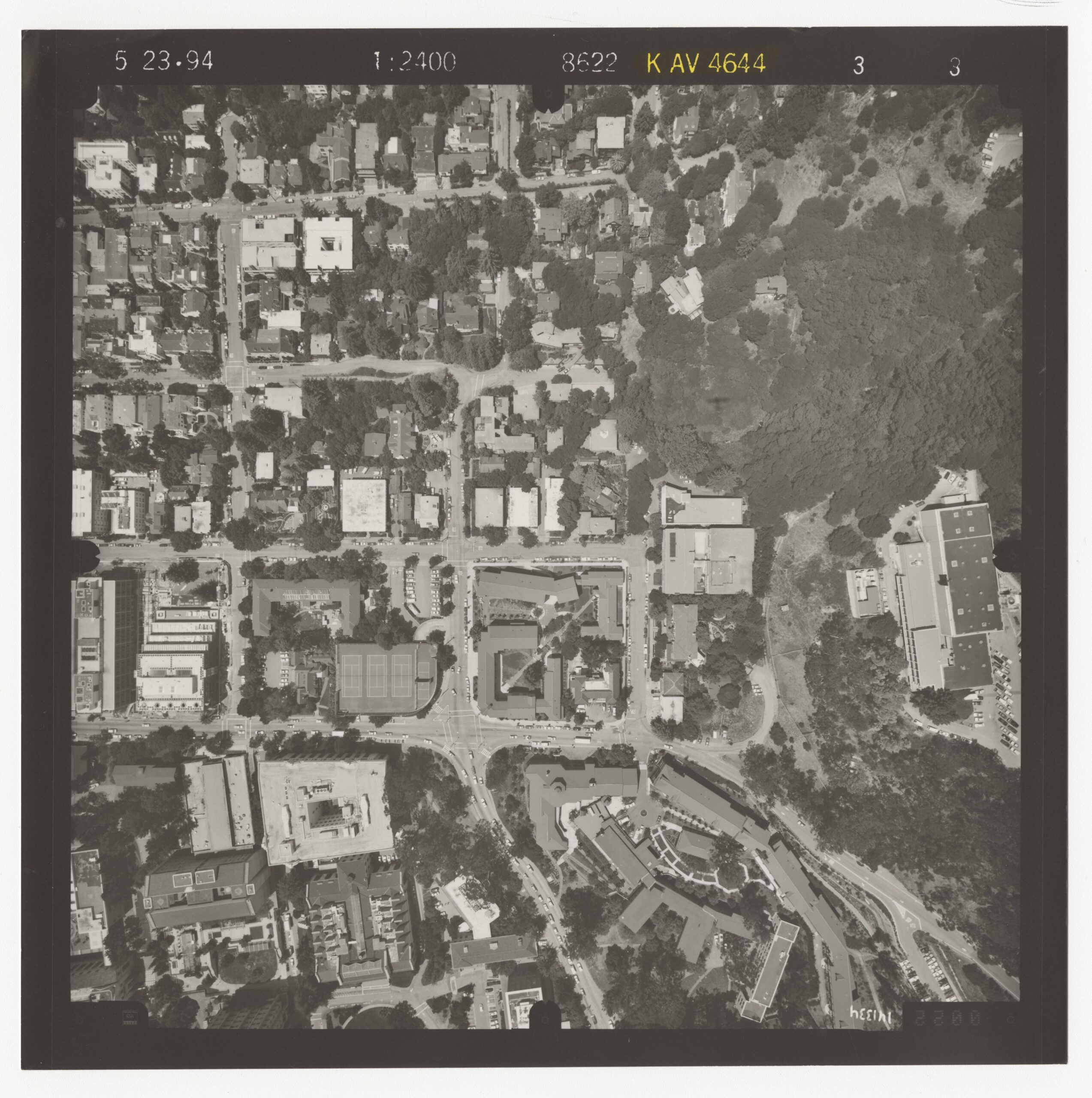
David Armor, a founding member of SLATE, lived in Barrington Hall while attending UC Berkeley, and participating in student government and campus activism. In 1959, he became the first and only member of SLATE to be elected as ASUC President. Armor describes his experience living at the student cooperative Barrington Hall during his freshman year as such:
Again, as a very poor student, I chose the cheapest housing, which was…a cooperative, Barrington Hall, terrible building, really not in good shape…there was a two-person bedroom, two two-person bedrooms, and then a one-person bedroom, so five people sharing a bathroom. And co-op means that you did the work…You work. You did the food, the serving, the cleaning, and everything, that’s how you paid, why the fees were so low. So you basically worked to provide all the services.
However, after a semester, Armor also decided to transition to an apartment. While making this change, he and his roommates integrated some of the cooperative practices they adopted from Barrington into their new living dynamic. Armor reports this influence as having a positive impact on his development as a young adult:
So we got an apartment in the second semester of my freshman year, and five roommates, and we divided up the chores, cooking and whatever, and that was a great experience, because we [were] becoming independent, and living on our own.
Armor’s desire for strong community and cooperation mirrors the effective practices of SLATE’s grassroots political advocacy approach. Housing was one of the main issues of SLATE’s political platform, and the group supported the Berkeley Fair Housing Ordinance in 1959. SLATE also opposed the University’s compulsory ROTC program for male freshmen and sophomores. Members defined SLATE by its beliefs in student organizations, advocacy, and the right for personal academic freedom on UC Berkeley’s campus and its surrounding areas. Communal living, even on an apartment scale, is still a method of community building for students at UC Berkeley. In addition, cooperative living situations are often regarded as financially accessible for a wide range of students looking for housing in Berkeley. Armor and other SLATE participants likely resonated with communal styles of living because of their political and personal beliefs, as well as their material needs.

Over the past sixty years, both Barrington Hall and the UC Berkeley chapter of the Delta Phi Epsilon sorority have closed; the physical structures where they were once housed are the largest reminders and evidence of their impact on campus. Stebbins Hall, Morris’s first housing experience at Cal, is still operational as a student cooperative, and has been co-ed since 1971. In short, the built environment since the time of the Free Speech Movement on Berkeley’s campus has both endured and been changed in ways that would feel substantial to former students and members of SLATE.
The activists highlighted here craved more autonomy and less censorship in both their campus and housing climates. They were able to socially campaign for their beliefs as a result of cross-community building practices. Goldberg, Morris, and Armor all lived in houses with a built-in social element; this was likely a great opportunity for idea-sharing and recruitment for SLATE’s cause, as well as a way to foster meaningful connections with their housemates. Their interviews reveal the importance and impact of these connections, as well as the places in which they were formed. What these narrators recall best from their time at UC Berkeley—outside of their work with SLATE—is not classes or grades, but instead the places they lived and the communities of people they built in those places. Indeed, Goldberg, Morris, and Armor’s individual memories of student-led activism and the communities that emerged from, and around, that work have remained strong sixty years on.
About the Oral History Center
The Oral History Center of The Bancroft Library preserves voices of people from all walks of life, with varying political perspectives, national origins, and ethnic backgrounds. We are committed to open access and our oral histories and interpretive materials are available online at no cost to scholars and the public. You can find our oral histories from the search feature on our home page. Search by name, keyword, and several other criteria. Sign up for our monthly newsletter featuring think pieces, new releases, podcasts, Q&As, and everything oral history. Access the most recent articles from our home page or go straight to our blog home.
Freedom Summer and Its Legacy: Berkeley Sixty Years Later
By Sophia Faaland
Sophia Faaland is a third-year student at UC Berkeley studying history. They are an Undergraduate Research Apprentice and Archaeological Field Student for the Nemea Center. Sophia works at the Oral History Center as a student editor.
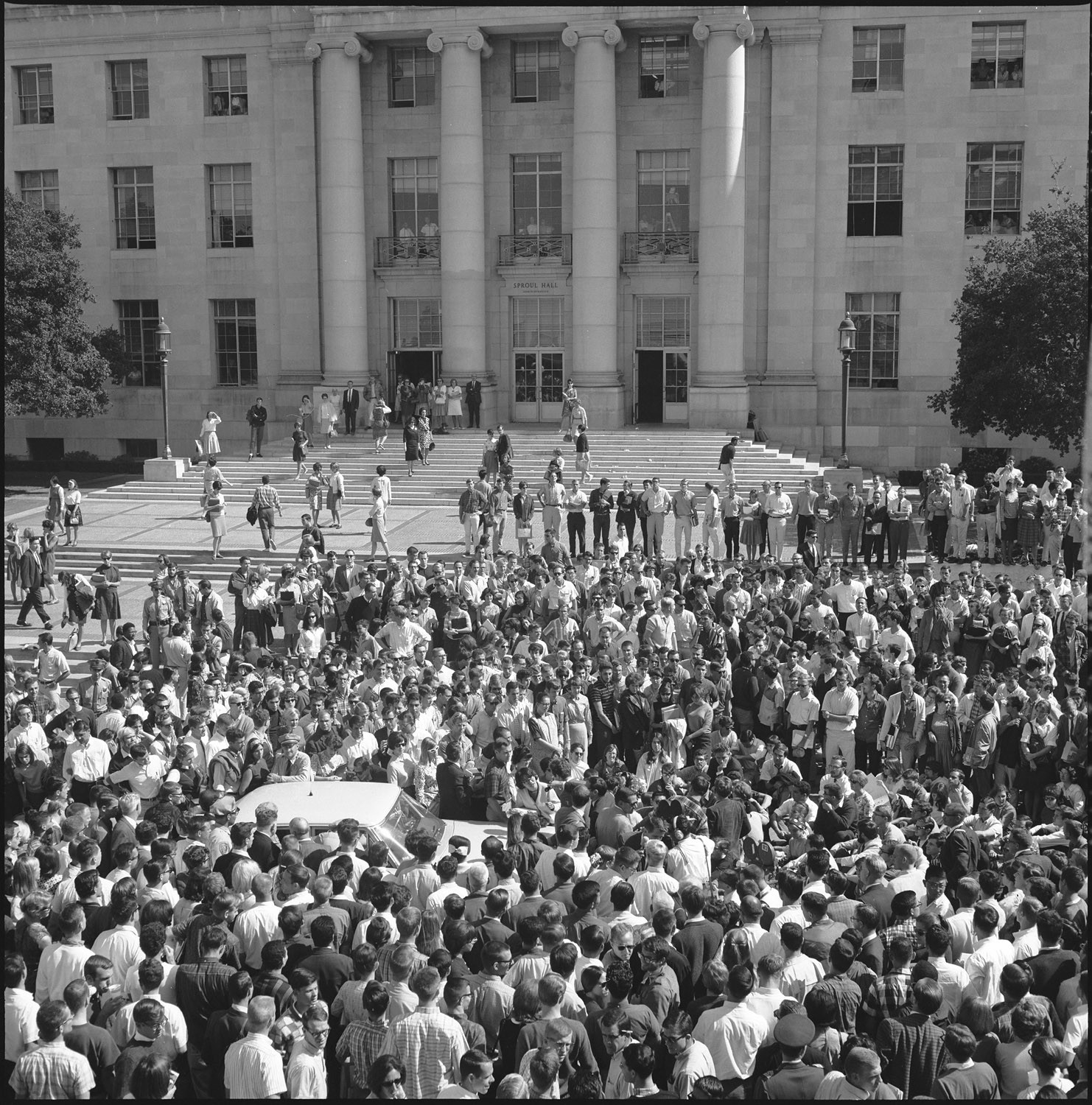
Freedom Summer in 1964 was a landmark moment in the Civil Rights Movement that challenged systemic racism in the United States. Activists—typically white, college-educated, and from Northern states—volunteered to travel to Mississippi and Louisiana to direct national media attention towards Jim Crow Laws and racist violence that prevented Black people from voting in Southern states. The ultimate goal of Freedom Summer was to end racial inequality in the Deep South, and ensure constitutional liberties for all people living in the United States. Organizations such as CORE (Congress of Racial Equality), SNCC (Student Nonviolent Coordinating Committee), NAACP (National Association for the Advancement of Colored People), and SCLC (Southern Christian Leadership Conference) all recruited, trained, and coordinated activists for Freedom Summer. Once there, activists faced the legacy of deeply-rooted systemic racism in the United States that had shaped elections.
Beginning in the late nineteenth century, politicians in the American South designed excessively complex voter registration forms in order to privilege white people attempting to register over Black people—regardless of the quality of responses. For instance, forms without a dot above the letter “i” would be disregarded entirely if they were filled out by a Black person. To combat this, Freedom Summer activists provided workshops for Black residents to navigate deliberately unforgiving voter registration forms, and taught literacy classes in Freedom Schools.
This moment in history drew on decades of activism from the Black community, accelerating the passage of the Civil Rights Act in July 1964 and the Voting Rights Act in August 1965. The integrated effort of Freedom Summer helped popularize the movement for civil rights legislation across the country, and reached many pockets of American society, including the UC Berkeley campus. On this sixtieth anniversary of Freedom Summer, it is important to acknowledge that the movement did not happen long ago. This recent, violent struggle for civil rights illustrates the aggressive power of white supremacy in American society and its persistence in American politics. UC Berkeley’s Oral History Center features interviews with narrators who experienced this critical moment in civil rights history firsthand. Their memories of civil rights activism include the period before Freedom Summer, during Freedom Summer itself, and the movement’s impact on UC Berkeley. The Oral History Center does not currently have any interviews of Black activists who participated in Freedom Summer.
Before Freedom Summer, UC Berkeley Professor Olly Wilson was a Black participant in civil rights activism across the United States. In the late 1950s, while working to obtain his bachelor’s of music at Washington University, he was also an active member of CORE, where he volunteered for test cases. Civil rights organizations frequently used test cases to prove racial discrimination and, subsequently, define new anti-discriminatory law. Wilson recalls the process of gathering evidence of racial inequality for CORE test cases:
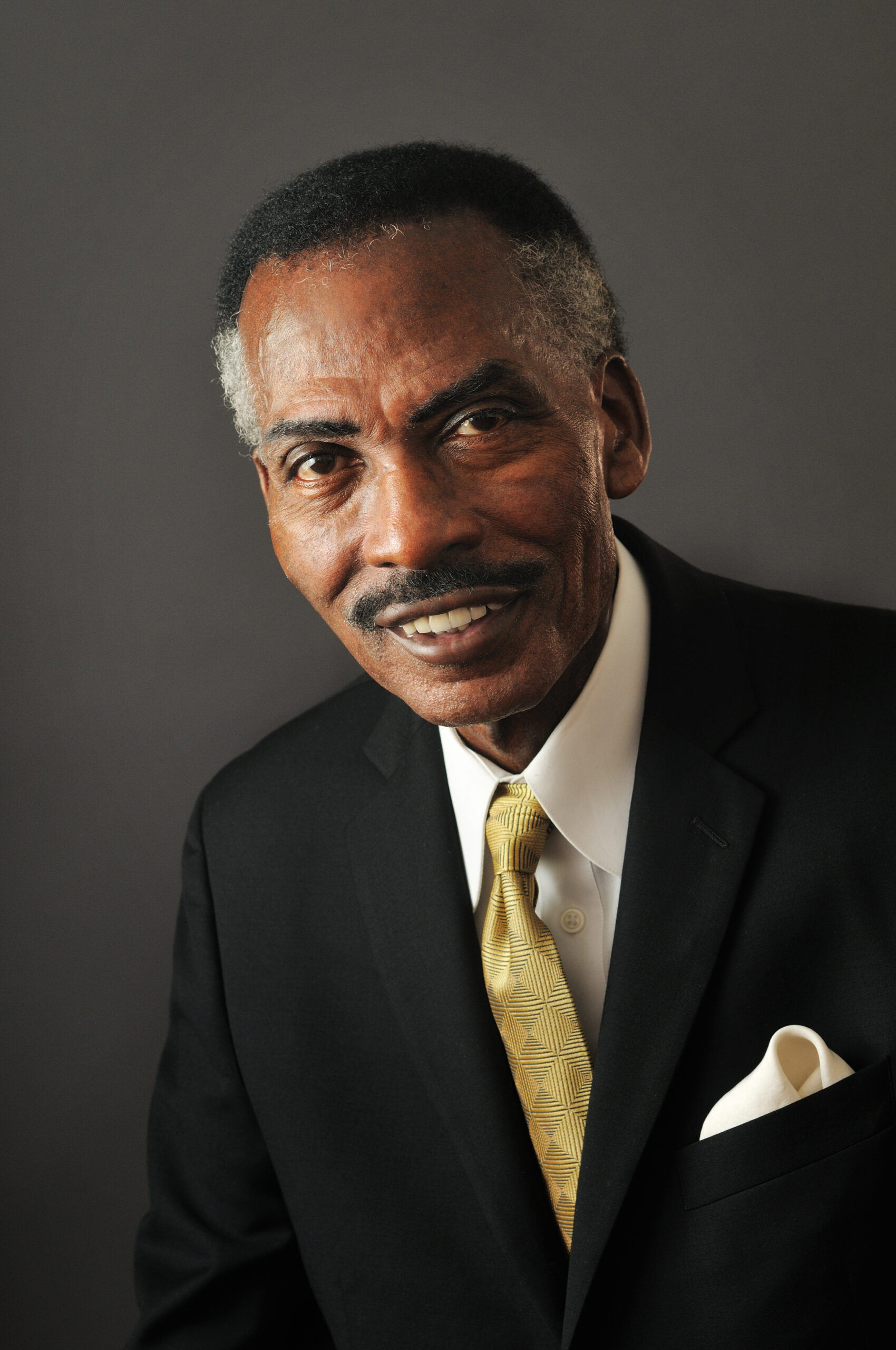
What we would do is to have a Black person go into a hotel or restaurant by himself and he would either be served or not served. Then you’d have a Black and a white person go in and they would be served or not served. Then you would have a white person go in, the same white person go in by themselves, and you are both creating valuable data for legal challenges and pointing out the inanity of it all.
In 1960, Wilson accepted an academic appointment at the University of Florida A&M, and traveled to the Deep South with his wife, Elouise. On this journey, he witnessed Jim Crow laws in action and stark segregation for the first time. In his oral history, Wilson discusses Elouise’s experience of determining the correct car while transferring trains in New Orleans. He describes how segregation was discriminatory and nonsensical:
When she gets in the train, she notices that this is a brand new, beautiful, clean car, and she looked in the corner and nobody else was there but white folks, you know. So, she was wondering, “Well, maybe I am in the wrong car…” Now, Elouise is light skinned, and sometimes, if you don’t look at her right, you know, you might not know what race she is, you know. So, she was afraid people didn’t look at her right, so she came out, because she thought, “Well, if I get on this car and then Olly comes, they are definitely going to send him to the Black car, and I will be up here and he will be at that end…”
One year after the Wilsons’ journey to Florida, Freedom Riders boarded buses and trains through Mississippi to advocate for legislation ending segregation on interstate public transportation. In 1961, Mimi Feingold Real, a civil rights activist with CORE, was jailed for her participation in the Freedom Rides. Feingold Real recalls that the purpose of the Freedom Rides was to draw national media attention to Mississippi’s segregationist laws:
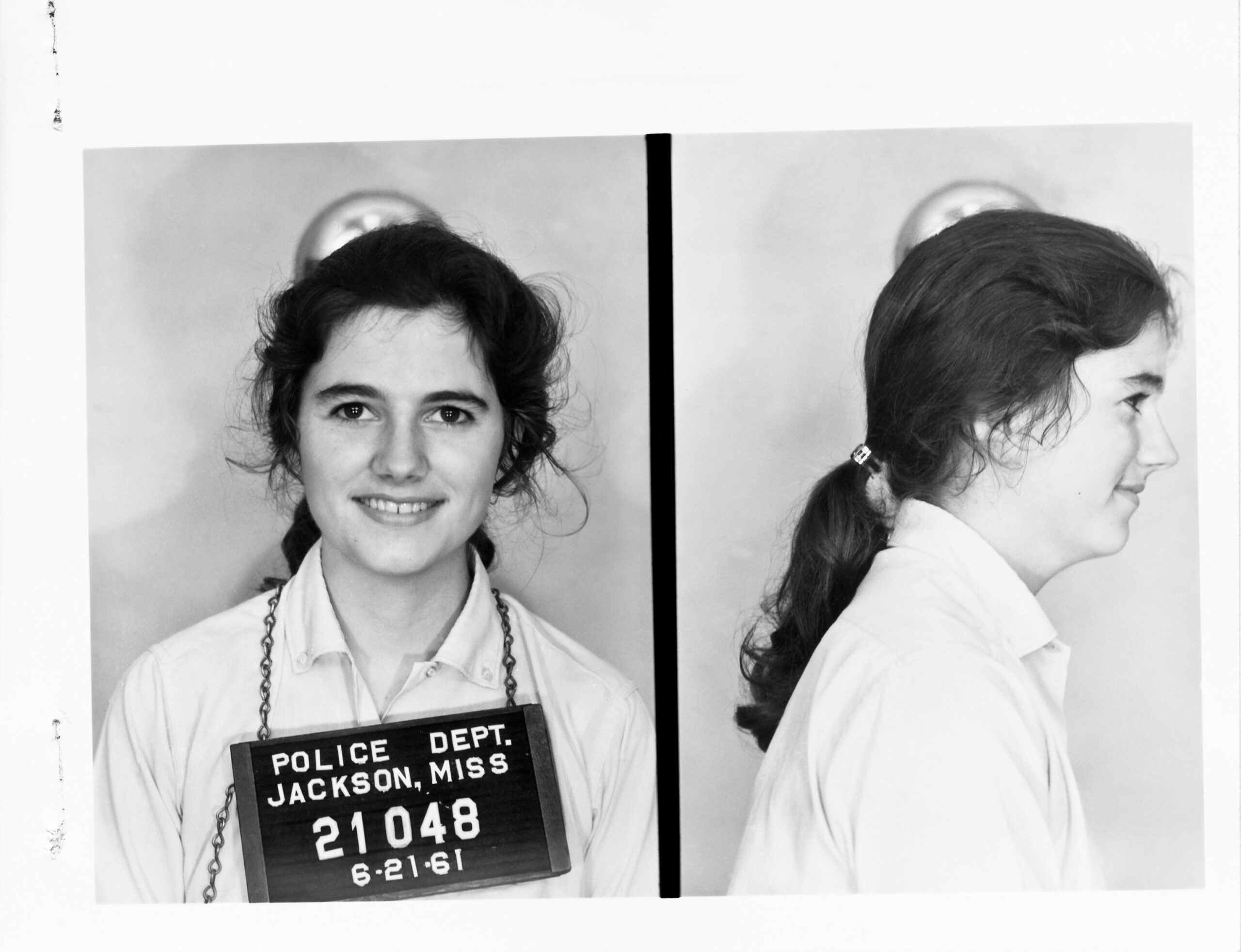
What we were doing—it was twofold, again—we were testing the system, doing a little stress test. But we were also, by the time I joined, we were also doing sort of a jail-in in Mississippi, that one of the ways to create pressure on the State of Mississippi was to have—first of all, to have all these Freedom Riders flooding into the state. But we all, as a condition of our being accepted, we had to agree that we would stay in jail for forty days. And that had to do with a quirk in the law in Mississippi, that you had forty days to post bail, and if you had not posted bail by forty days, you forfeited that right. So CORE was going to bail us out, but we were going to stay in that full forty days. That would force Mississippi, of course, to house us and clothe us and feed us and put up with all the national publicity that would arouse, and that would be one more way to pressure, at least the State of Mississippi, to discontinue this odious practice of segregated interstate transportation facilities.
Feingold Real extended her career in civil rights activism by continuing to work with CORE in Louisiana. She became a Freedom School teacher in the East Feliciana Parish teaching literacy, and showing Black residents how to navigate voter registration. In her oral history, she describes her philosophy of work as a Freedom School Teacher in 1963:
This wasn’t any sort of top-down endeavor, this is giving people the power to act on their own. It’s not trying to put pressure on the federal government to come in, and from the top-down force the white people in the South to do something that will allow Black people to do something else. I mean, in a way that was one of the ideas. But the basic idea was power to the people, giving people the initiative to make their own decisions and to have control of their lives. And that’s what I was doing on a person-to-person basis.
Chude Pamela Allen began participating in civil rights activism in 1964 when she heard the director of SNCC Freedom Schools, Staughton Lynd, speak in a seminar titled “Nonviolence in America” at Spelman College. Lynd inspired her to travel to Mississippi during Freedom Summer with the SNCC and help ensure Black people’s right to vote. She recalls the shift in political opinion about the protection of civil rights activists after the murder of Michael Schwerner, Andrew Goodman, and James Chaney in June 1964:
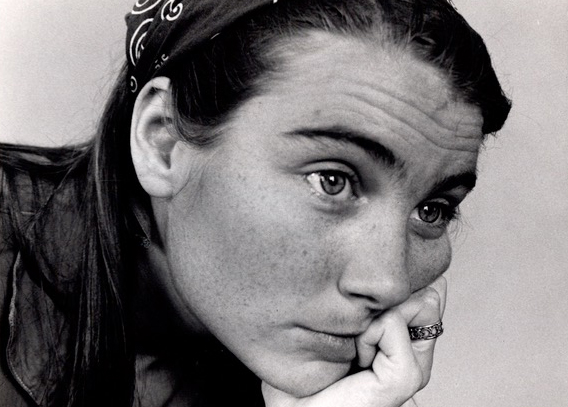
And one of the first things we were then asked to do was to divide up by states, and then contact our parents and relatives to contact their congressmen and ask for safety for the civil rights workers. I did that, and my father did contact his congressmen. And later I learned, because his congressman—at least one of them called him up and said, “Get her out of there.” And my father who, as I’ve defined, was not what we think of as a political activist, but he said very clearly to his congressman, “This is not about her safety. It’s about all their safety.” That kind of shift—and that’s just, again, that reference to the fact that when you get involved in something, people around you can also have their own—they grow, too, or they can grow, depending on whether they support you.
To help combat social and political barriers Black activists faced, Freedom Summer activists were an integrated group. In her oral history interview, Allen reflects on adjusting to safety precautions in the Deep South, and becoming more aware of the nature of racist violence. Allen recalls that white activists did not always respect the danger integrated activism created for their Black colleagues during Freedom Summer:
I heard one story, as an example, of a white woman who did not want to hide on the floor under a blanket when riding in a car with a number of Black people, mostly men. I can remember the worker who then said he wouldn’t ride in a car with her anymore, because she insisted on sitting up. She insisted, “I have the right to be seen.” But of course, in that situation, she wasn’t the one that was going to get beaten to a pulp.
Even across the country, Berkeley students and university administrators felt the social and political repercussions of Freedom Summer. In 1964, UC administrators punished students exercising political speech that the university deemed unacceptable—beginning the debate on the limits of campus free speech. Prohibited topics of speech included civil rights and anti-Vietnam War advocacy. One of the first students arrested during the Free Speech Movement, Jack Weinberg, tabled in Sproul Plaza with CORE to raise money for civil rights work after returning from Freedom Summer activism in Mississippi. His arrest for speech on civil rights sparked a spontaneous sit-in protest around the police car detaining him that lasted thirty-two hours until he was released (seen in the first photo). Atop the police car at the protest for Weinberg’s release, Cal student Mario Savio gave a rousing speech to the crowd on the fundamental right to speech, and later became instrumental in organizing the Free Speech Movement at Berkeley. Savio had also returned from Mississippi for Freedom Summer before his organization of the Free Speech Movement in 1964. Thus, it was not a coincidence that the Free Speech Movement became a mass protest on the UC Berkeley campus the same year Freedom Summer occurred. This debate on speech and advocacy played a pivotal role in shaping the protections of student and faculty rights to free political speech at UC Berkeley today.
UCB professor Leon F. Litwack witnessed this shift in student activism at the beginning of the Free Speech Movement. In his oral history, Litwack remarks on the similar philosophies of Freedom Summer and the Free Speech Movement:
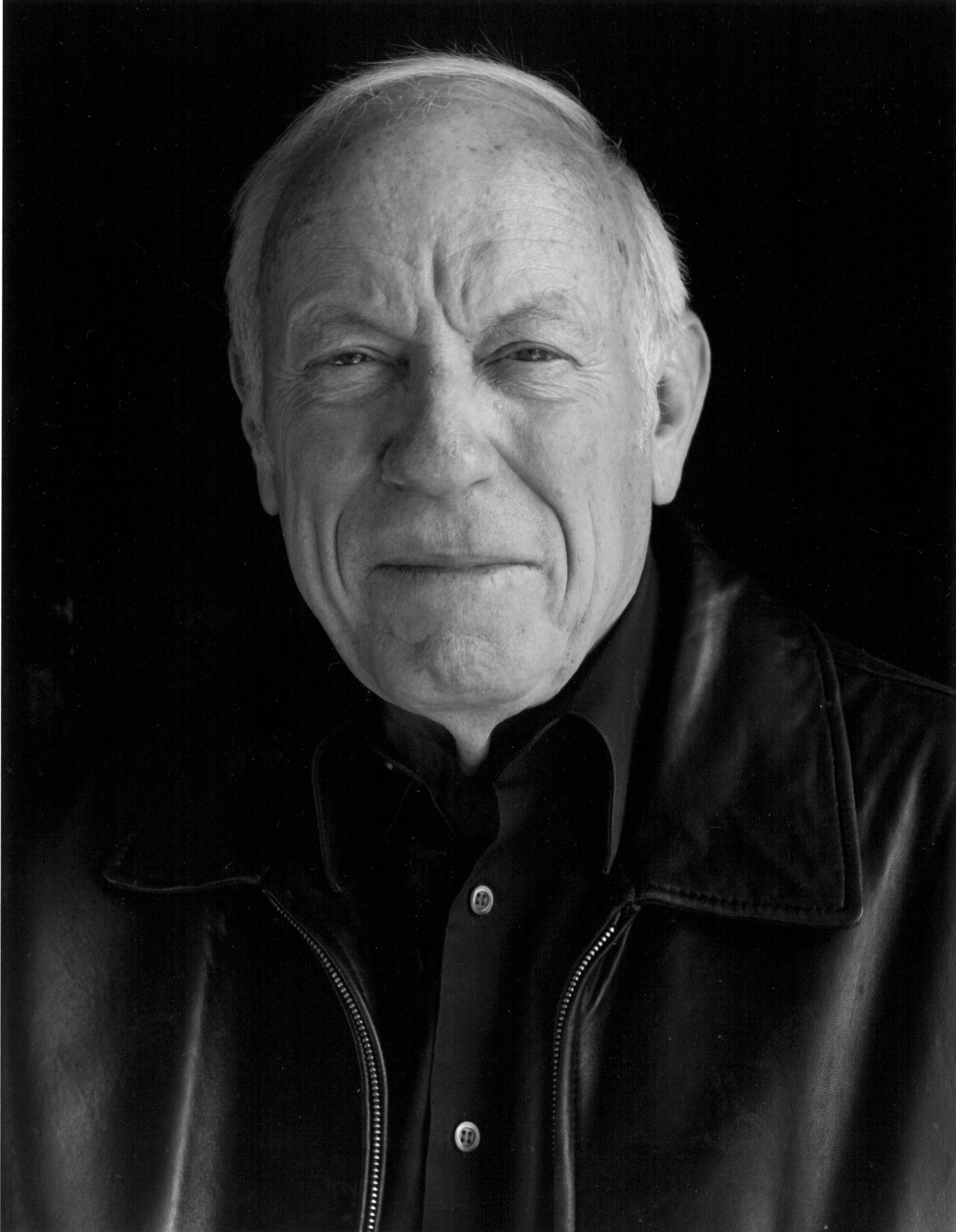
Of course, Mario Savio had just come back from the Mississippi summer when he came back to Berkeley in 1964. At places like Berkeley and other places around the country significant numbers of young people came to believe that direct personal commitment to social justice was a moral imperative and that social inequities are neither inevitable nor accidental but reflect the assumptions and beliefs and decisions of people who command enormous power, including the university administrators. Well, these were important perceptions. So what began at Berkeley as a protest to obtain a very traditional liberal freedom, freedom of speech and advocacy, soon brought into question the official version of reality.
In all, the legacy of Freedom Summer in 1964 is a historically significant moment that accelerated voting protections for Black people in the United States, and inspired the movement to protect free speech on all university campuses—starting at UC Berkeley. The passage of the Civil Rights Act of 1964 and the Voting Rights Act of 1965 solidified the work of civil rights activists, and encoded anti-discriminatory practices into federal law. In the sixty years since Freedom Summer, Berkeley students have utilized their freedom of speech to address many other political issues, and as a result, the university has a reputation for vibrant political dialogue. The debate about the limits of free speech continues to this day as the University of California system grapples with Pro-Palestinian student activism. Indeed, on August 19, 2024, UC Berkeley announced its new policy for “expressive activity,” revising the previous agreements on freedom of speech for the coming academic year.
To learn more about the history of student activism at Berkeley, the Oral History Center collections include many other interviews, including the SLATE and Free Speech Movement oral history projects. For more information on women’s activism throughout the twentieth century, please visit the Women Political Leaders collection. To learn more about Black activists involved in the Civil Rights Movement and their legacies, see Charles M. Payne’s book I’ve Got the Light of Freedom: The Organizing Tradition and the Mississippi Freedom Struggle. Finally, the UC Berkeley Library holds a wide variety of secondary sources on Freedom Summer, available here.
About the Oral History Center
The Oral History Center of The Bancroft Library preserves voices of people from all walks of life, with varying political perspectives, national origins, and ethnic backgrounds. We are committed to open access and our oral histories and interpretive materials are available online at no cost to scholars and the public. You can find our oral histories from the search feature on our home page. Search by name, keyword, and several other criteria. Sign up for our monthly newsletter featuring think pieces, new releases, podcasts, Q&As, and everything oral history. Access the most recent articles from our home page or go straight to our blog home.
Student activism highlights from the Associated Students of the University of California, Berkeley records
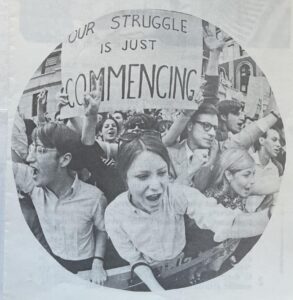
The Associated Students of the University of California, Berkeley records are now open to researchers at The Bancroft Library. The Associated Students of the University of California, Berkeley (ASUC) is the officially recognized students’ association of the University of California, Berkeley. The ASUC is a 501(c)(3) non-profit, and is the largest and most autonomous students’ association in the nation. Founded in 1887, the ASUC continues to operate separate from University governance. The ASUC controls funding for all ASUC-sponsored clubs and organizations, provides resources and student programming, oversees commercial activities and student services including the Cal Student Store and Lower Sproul Plaza in partnership with the ASUC Student Union, and advocates for students on a University, local, state, and national level.
The collection includes ASUC constitutions, executive office files, Student Advocate’s Office files, senate bills, agendas, and resolutions, committee files, financial and budget materials, planning and renovation files, ASUC program files, and other material documenting student services, groups, and activities from 1893 to 2012.
The collection also contains materials documenting student activism on campus, including the Free Speech Movement, People’s Park advocacy, affirmative action, the Third World Liberation Front, divestment in South Africa, and LGBTQ rights.

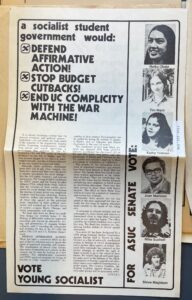
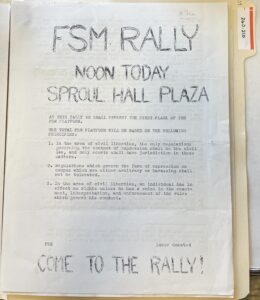
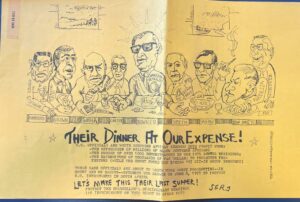
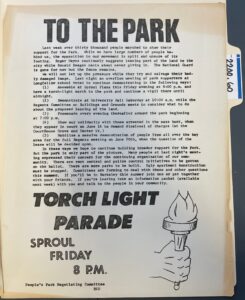
“Stop Pot Rot – Switch to Beer!” The California NORML Records Are Open for Research
The California NORML records capture the history of marijuana reform nationwide. The bulk of the collection consists of people, organization, subject, and legal files, but there are also administrative records, ephemera, and publications about marijuana. The collection includes mass mailings that document the history of the organization, like this letter from Amorphia:
Some letters (circa 1974-1980) show how people worldwide used California NORML as a resource. A writer from New Zealand requests (among other things) “a mixture of music to listen to stoned”; another correspondent asks them to send as many packs of rolling papers as they can get for $1.
Some of the organization’s mass mailings were returned, with the recipients’ clear criticism of California NORML. One is from Howard L. “Chips” Gifford, a “Maverick” Democrat who challenged – and lost to – incumbent California Senator John V. Tunney in the 1976 primary. Gifford wanted to “Stop Pot Rot.” (Tunney was, in turn, narrowly defeated by Republican S.I. Hayakawa in the general election). Another was returned by the folks at Sedition, a radical free newspaper in San José that “sought to revolutionize the nation.” They critiqued California NORML from the left, as a tool of “the established ruling class.” (https://scholarworks.sjsu.edu/sedition/)
The subject files in the California NORML records track legislation in all of California’s counties and in all 50 states. They also document issues that were central to the organization in the 1970s and 1980s, from medical and therapeutic uses of cannabis, to correcting misinformation about marijuana, to the war on drugs, to the dangers of herbicides, such as paraquat. These files also help put the fight for marijuana reform in the context of other struggles for change. They also suggest an interest in coalition building with – or at least support of – other political activists, from the White Panthers, an anti-racist political collective, to COYOTE (Call Off Your Tired Old Ethics), a sex workers’ rights organization. The folder titled “Gay Coalition,” for example, contains a flyer for a sale in Los Angeles “to support the Gay/Lesbian liberation projects of our household.” The members of “our household” included Morris Kight, who co-founded the LA chapter of the Gay Liberation Front and who helped lead a campaign against Dow Chemical and the use of napalm in Vietnam. (https://oac.cdlib.org/findaid/ark:/13030/kt6w1040bj/)
The California NORML records also include materials from other organizations and ephemera from their own events. These include publications from the Student Association for the Study of Hallucinogens (STASH), and a poster from the “First Right-to-Harvest Festival, “A Day on the Grass,” [1978]. The festival featured Margo St. James from COYOTE and medical marijuana activist Dennis Peron. (STASH formed to provide unbiased information on drugs and drug use by students at Beloit College in Wisconsin in 1968. They moved to Madison in 1974 and disbanded in 1980: https://search.library.wisc.edu/catalog/9911124865502121)
For more information about the collection, access the finding aid and catalog record for the California NORML records (BANC MSS 2009/122) here:
https://oac.cdlib.org/findaid/ark:/13030/c8dj5pkj/
https://search.library.berkeley.edu/permalink/01UCS_BER/1thfj9n/alma991074574479706532
SAA Annual Meeting Centers Archival Accessioning (and the work of Bancroft’s Accessioning Archivist Jaime Henderson!)
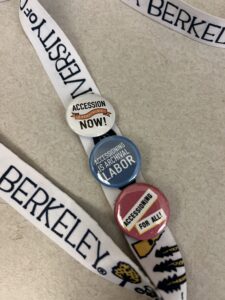
The Society of American Archivists Annual General Meeting took place in Chicago between August 14th and August 17th. For many of the archivists at The Bancroft Library, this was the first in-person SAA meeting we have attended in years and we had lots to do, talk about, and even celebrate.
Most notably, Bancroft Accessioning Archivist Jaime Henderson helped put on a day-long symposium introducing a new archival standard: the Archival Accessioning Best Practices. The product of a few years of hard remote and in-person work by the Archival Accessioning Best Practices Working Group (of which Jaime is a member), these best practices are the first of their kind. The efforts of the Working Group were made possible by generous funding from the Institute of Museum and Library Services. Archivists all over the country are excited to see dedicated best practices that center archival accessioning as a key component in ethical archival practice and management.
The Archival Accessioning Best Practices were recently submitted to the Society of American Archivists’ Standards Committee (currently chaired by yours truly) for approval as an official SAA standard and will be published as a GitBook document soon.
The Archival Accessioning Best Practices Working Group was also honored with an SAA Council Exemplary Service Award at the annual business meeting this past Saturday. We all congratulate Jaime and her colleagues for this well-deserved honor.

Bancroft Library Processing News
The archivists of the Bancroft Library are pleased to announce that in the last quarter (April-June 2024) we opened the following Bancroft archival collections to researchers:
Oliver Williamson papers (Michele Morgan and Marjorie Bryer)
Howard Luck Gossage papers, approximately 1960-1973 (Jaime Henderson and Lara Michels)
Barbara Oliver collection of theatre materials, 1945-2012 (Jaime Henderson and Lara Michels)
Mary Moore papers, 1975-2002 (Presley Hubschmitt)
Arif Press records, approximately 1970-1991 (Dean Smith)
Letters from Victor Palfi to Dody Weston Thompson, 1961-1964 (Jaime Henderson)
Tulare County Sheriff’s Office scrapbook of wanted flyers, cards, bulletins, and posters (Lara Michels)
Robert Jackson archive of Zen Buddhism in Berkeley, California (Marjorie Bryer)
Gladys L. Collier papers (Marjorie Bryer)
[Stuart H. Ingram photograph album of the class of 1908] (Jessica Tai)
Brett Weston and Dody W. Thompson correspondence and journals, 1949-1989 (Jaime Henderson)
Rosario Curletti papers (Marjorie Bryer)
Gay Olympics (Gay Games) scrapbook, 1982 (Marjorie Bryer)
Art Varian collection of scrapbooks and photographs, 1911-1945 (Marjorie Bryer)
Granary Books collection of publishing ephemera, 1986-2021 (Marjorie Bryer)
African American choir ephemera collection, approximately 1931-1946 (Marjorie Bryer)
Hadassah San Francisco, Lakeside Chapter records, cookbooks, and photographs, 1980-2005 (Lara Michels)
Charles W. Hope papers (Lara Michels)
Prisoner rights ephemera (Marjorie Bryer)
Sandra Ramois collection on Eldridge Cleaver, 1984-1998 (Marjorie Bryer)
Diana Russell collection on Lakireddy Bali Reddy sex trafficking case, 1999-2018 (Jaime Henderson and Marjorie Bryer)
Emma Fong Kuno papers, 1907-1942 (Marjorie Bryer)
Tobyanne Berenberg collection of Ethel Duffy Turner papers, 1860-1984 (bulk 1955-1969) (Marjorie Bryer)
Paul Steiner family papers (Presley Hubschmitt)
Arthur St. John Oliver journal, 1899 (Michele Morgan)
Mare Island Naval Shipyard Structural Shops Training Program Course Packet, 1958 (Michele Morgan)
Elisabeth C. Caldwell Niles letters, 1858-1866 (Marjorie Bryer)
Mariana Ruybalid papers (Jaime Henderson and Marjorie Bryer)
The Pictorial Processing Unit opened:
70 small collections and single items (approximately 7,160 items, total)
Including:
A 2,450 item collection of Frashers Fotos real photograph postcards of California views, published approximately 1925-1955.
Over 1250 snapshots in a Photograph album documenting California travels, Christian Endeavor events, approximately 1925-1945.
A collection of William Alsup’s well-documented and beautifully printed photographs of the Sierra Nevada, with recent additions.
And also made available:
A newly published finding aid to the Robert Altman photograph archive of rock-and-roll and counter-culture images, chiefly of the 1960s and 1970s.
Additions to the Art Hazelwood Collection of San Francisco Poster Syndicate Political Posters
Celebrating the Work of Freedom to Marry, Through Oral History
By Katie Gonzales
The Oral History Center’s Freedom to Marry collection features interviews from key members of the Freedom to Marry organization. Officially launched in 2003 by Evan Wolfson, the campaign worked to legalize same-sex marriage across the United States. The campaign originally worked on helping same-sex couples get married on a smaller case-by-case scale, as at the time, no state in the country had legislation protecting same-sex marriage. The first state to even do so was Massachusetts in 2004. Throughout the organization’s lifespan, same-sex marriage went from being legally unprotected on a state level to federally protected as an unequivocal right across the United States.

However, in June 2024, the Supreme Court countered this ruling in Department of State v. Muñoz, in which it declared that the right to bring a noncitizen spouse to the United States is not constitutionally protected. This ruling could be detrimental towards married same-sex citizens and noncitizens who would have to leave the United States, a country where their marriage is legal, back to a home country where it isn’t.
Given the June 2024 Supreme Court ruling, as well as this being Pride month, it’s a great time to look back on the work that Freedom to Marry did to legalize same-sex marriage. The lessons from the organization remain as important today as they were twenty years ago. When initially proposing the Freedom to Marry campaign to potential investors, Wolfson remembers:
I would be saying things to them like, look, if you just want to sprinkle some money around and do some ordinary building programs and helping people, I’m not the right person for you. And if you want to stay in your work up till now, which has been primarily in the Bay Area, and certainly only in California, not nationally, I’m definitely not the right guy for you. But if you really want to make a difference, what you really ought to do is support a campaign to win the freedom to marry. They went, “Marry?” “Yes, marriage. Marriage is the engine of change, marriage is what we’re going to have to be fighting for. You can do good work this way, but if you want to be transformational, you need to do this.”
One major battle that Freedom to Marry faced was when Proposition 8 passed in California. This ballot proposition intended to ban same-sex marriage measure passed in 2008. At the time, this was a massive blow to Freedom to Marry’s campaign, especially due to California’s reputation as a more progressive state. Tim Sweeney, a member of Freedom to Marry’s board of directors, recalls:
We were just devastated. It was devastating. Right? In California, the progressive beacon of the west, right? And we lost handily. It wasn’t close, which would have just taken a bit of the sting out of it. But what was interesting is the number of non-LGBT people who were outraged that their friends and family that they loved and cared about were basically being told you’re second-class citizens and your love is not legitimate. It created such a wave of we’re going to commit ourselves to fix this. And we have to be willing to be with them in their anger, invite them in in a new way, let them lead with us. All of that is hard to do, I think, in a social movement because you get worried they don’t really get it, their message is not your message, are they going to do some half measure, are they going to compromise, what do they know? But you got to kind of trust that they’re with you and you got to really in some cases step aside and realize, for instance, the message you may say to yourself or within the community is different than the one the non-LGBT community needs to hear. And maybe they need to have different messengers that just talk about the journey in a way that maybe an LGBT person wouldn’t sound authentic or real on. So that was just such an interesting moment. It’s almost like after Prop 8 we needed to step back a bit and let the world realize, “Wait a minute, what happened here? This is not okay.”
After the loss in California, support for LGBT rights increased due to the sheer amount of media coverage of the loss nationally. A Pew poll from 2010 cited that over 60% of Americans supported same-sex marriage, a drastic difference from polls in the 1990s that cited 60% of Americans against same-sex marriage. But by 2012, President Barack Obama made his support for same-sex marriage clear, stating that his views had “evolved” since his first presidential term. Thalia Zepatos, the Director of of Research and Messaging for Freedom to Marry recalls in her 2016 interview the impact of Obama’s statement:
I think really two things happened. One was that Governor [Martin] O’Malley really got involved in the campaign, but the big one was that our long-term effort to really engage the White House and President Obama came to fruition, you know not long before the election and President Obama made his statement in support of same-sex marriage, and within twenty-four hours, polling support for marriage among black voters in Maryland went up by twenty points. I mean, it was the biggest single day increase I’ve ever seen anywhere and I think it contributed just in a very great way.
By 2015, 37 states had legalized same-sex marriage, but it would not be a federal right until the Supreme Court case of Obergefell v. Hodges, which argued that same-sex marriage was a right under the Fourteenth Amendment’s Due Process Clause and Equal Protection Clause. On June 26, 2015, the Supreme Court announced its ruling: same-sex marriage was guaranteed as a fundamental right. The same night, the White House was bathed in rainbow lights, an unmistakable show of support for the ruling. Jo Deutsch, Freedom to Marry’s federal director from 2011-2015, recounted this event:
It was a truth that, from every level, we had won. It was an acknowledgement from the President of the United States that our lives and our marriages mattered, in a just obvious way…This is the symbol of America and the symbol of the President of the United States, all in rainbow color. It was just breathtaking and so beautiful…We had come so far through our lives from asking can we walk down the street holding hands, or can we actually, in an introduction, say this is my wife? And now to this moment, there we were in front of the White House, in all of its colorful glory, with all of these people holding hands. I can’t tell you how many proposals we saw, with people just dropping to their knees right and left. It was like, another one dropping to their knees, and everybody started to clap. It was just phenomenal.
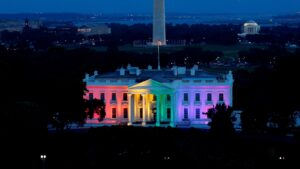
As the end of Pride month nears, it is important to remember that it hasn’t even been 10 years since the legalization of same-sex marriage in the United States. In many other countries around the world it is still taboo or even illegal. When we celebrate Pride month, it’s important to remember the work that many people and organizations did to ensure LBGTQIA rights, especially as they continue to face challenges. Celebrations can only happen as a result of triumph over tribulations, and should be remembered together.
Katie Gonzales is currently a third-year student at UC Berkeley studying English and Anthropology. She works as a student editor for the Oral History Center.
About the Oral History Center
The Oral History Center of The Bancroft Library preserves voices of people from all walks of life, with varying political perspectives, national origins, and ethnic backgrounds. We are committed to open access and our oral histories and interpretive materials are available online at no cost to scholars and the public. You can find our oral histories from the search feature on our home page. Search by name, keyword, and several other criteria. Sign up for our monthly newsletter featuring think pieces, new releases, podcasts, Q&As, and everything oral history. Access the most recent articles from our home page or go straight to our blog home.
New Oral History from the OHC – Greg Moore: Executive Director of the Golden Gate National Parks Conservancy
The San Francisco Bay Area is known for the kind of environmental advocacy that has become a model for regions around the country. There’s a long legacy, spanning decades, of people behind this work. Greg Moore is one of these people. Greg has dedicated his career to conserving public lands and making parks accessible for all. He, too, has become a model, someone to whom people throughout the country – and world – look for guidance.
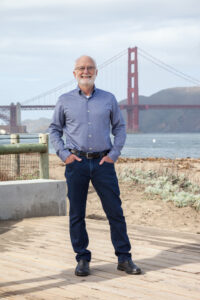
Greg served as the executive director of the Golden Gate National Parks Conservancy from 1986 until his retirement in 2019. The GGNPC was founded in 1981 and its mission is to preserve the Golden Gate national parks, enhance the park visitor experience, and build a community dedicated to conserving the parks for the future. But his work in the environmental sector began long before 1986, dating back to his time as a student at UC Berkeley in the newly-formed Conservation of Natural Resources School and College of Environmental Design, during the environmental decade of the 1970s when the Environmental Protection Agency was formed and regulatory laws, like the Clean Water Act, were passed. And even before that, when he was a ranger with the National Park Service.
I had the privilege of sitting down with Greg in 2022 to interview him about his life and work. In preparation for the sixteen hours I would end up spending with him, I spoke with a number of people who know him in different capacities – former fellow National Park Service rangers; as well as Conservancy board members, employees, and donors. One thing was clear: Greg is universally respected for his work and his collegiality. I kept hearing about how, as both a colleague and manager, he listened to people and carefully considered their perspectives. About how, as the executive director of the Conservancy, he wrote heartfelt letters to board members each year, letters that they all not only save, but cherish. About how he would write and perform in an annual musical parodying popular songs for year-end parties.
But what struck me the most was how present Greg was during each phase of our interview sessions. Whether we were discussing how he developed a love for music as a child; his studies at Cal and then later at the University of Washington; meeting his wife, Nancy, and raising their son; or his love for parks; the development of his career; managing a large staff and multi-million dollar fundraising campaigns; and working to make parks accessible for all, Greg took every question I asked seriously, responding sincerely and weaving in humor throughout.
Greg is perhaps best known for his work with the Conservancy. He played a role in the creation of the organization, which he discussed in more detail in his oral history, before becoming the executive director. There are an incredible array of projects on which he worked during his tenure with the Conservancy, like various habitat restorations, converting the Presidio from an Army base to a park, transiting Fort Baker from a military base into a national park, promoting citizen science through the Golden Gate Raptor Observatory, transforming Crissy Field into one of San Francisco’s crown jewels and creating the beloved Crissy Field Visitor Center, developing community partnerships and youth programs, and shepherding the Tunnel Tops project into existence. The list goes on.
The underlying theme of each of these projects was the drive to make parks accessible for everyone. “Parks for All” is the beating heart of the Conservancy’s mission. Here’s what Greg said about the origin of the mission:
“The ‘Parks For All’ came when the Conservancy was trying to think through how to simply and straightforwardly describe our mission. The Conservancy had a mission statement, but like many it was probably twenty-five to thirty words long, and I began thinking about how to put that in simple words that were very direct and, in some way, have the power-of-three impact. That’s when I began thinking, Well, of course, we’re about ‘parks.’ These are the physical places that we need to transform and enhance. Then we’re about ‘for all’ because these places are owned by every person in the United States as national parks, and then our final responsibility is ‘forever’ – to pass them from one generation to the next. It not only summarized our mission but almost described a theory of change that first you have the places and to make them for all youth to improve and enhance them. You have an opportunity to engage people in their enjoyment, in their stewardship, in their contributions for all, and then finally all the restoration work that cares for these places that you’ve enhanced and taken care of.”
Greg wanted to make sure people were aware that the parks existed, they felt comfortable there, and that they were relevant to the visitor’s life experience. He did this by bringing communities into planning conversations, implementing a bus route that would drive people from their neighborhoods to the parks and then back again, partnering with public libraries, and creating a multitude of programs – for kids, related to art, and citizen science for civilian park goers. Greg’s commitment to the Conservancy’s simple mission is what made the organization so successful and such an integral part of life in the Bay Area. And Greg’s interest in working with communities and listening to people – his colleagues, board members, donors, and park users alike – is what has made him such a towering figure in the Bay Area’s environmental movement.
It is with great excitement that we announce Greg Moore’s oral history is now publicly available.
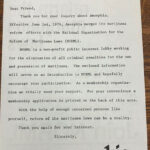
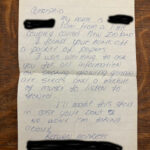

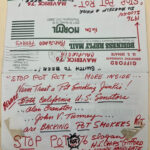
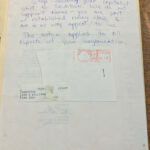
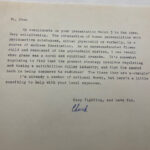
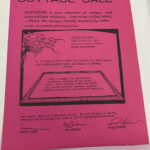
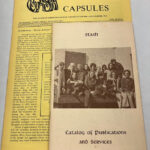
![Poster for "A Day on the Grass" listing bands, speakers. Trees and [marijuana buds] are in the background](https://update.lib.berkeley.edu/wp-content/uploads/2024/07/Poster_Large-150x150.jpg)